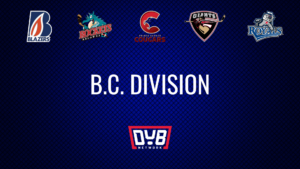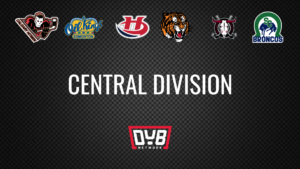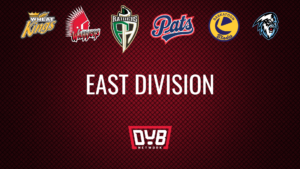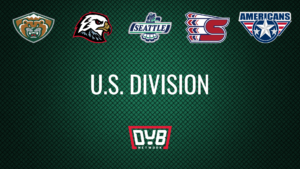You blink. Look up at an over exaggerated television screen to see the clock. 1:53 to go in the third, you’re down 0-1. Eyes back to the ice. A quick pass up to a winger, hinge net front D to the weak side. Step off the wall, chip and your centermen is out on a rush. Energy erupts in the stands behind you as you jump to your feet. Your head rotates back and forth between the rush and your goal tender skating full speed to the bench. Coach gives you a kick and you shift into overdrive as you join the play. Your team chipped the puck deep and has gotten into a scrum behind the net. You try to find space in the high slot while your teammates battle behind the net for possession. You’re cat eyed looking for the loose puck, ready to pounce. There! You jump into a wide open pocket back door “HERE!” Tap in, tied game.
Perfectly executed shift from a clean breakout to the forecheck, onto an easy goal. Text book.
Flipside.
1:53 to go in the third. You’re up 1-0. Your centerman pushes it to the wall and your other wing throws a hard rim off the glass. You slow down because of the speed, but the goaltender stops it short. Their defensemen retrieves the puck and moves around the net so you fill over top into the high slot for support. Your forward gets control and you take off towards the crease ready for a pass. He loses his edge and possession as the puck is slid off the wall. You spin and take a hard stride towards their wing as he puts a pass through you and the puck slides weak side. You change direction and get back on the forecheck. A quick step and chip sends their centerman on a fast break 2-on-2. You take a few hard strides and look around. Your other wing is the first forward back and taking the centermen’s position. You find a guy and stay with him in the slot. Your defense race to a chipped puck and pin the puck behind the net. Your centerman is slow to get back, but joins the zone with an extra attacker. The puck shoots loose as you wrap up with your guy, but leaving the extra attacker exposed. Your centerman stays high to cover the point and an easy back door tap-in ties up this game.
A break down in the offensive zone, poor tracking, and lack of attention to detail/communication in the defensive zone. A full line breakdown, from end-to-end. A team’s worse nightmare.
We always want to focus on who won, who scored the goal. We want to know what the positive side was, and we want to know who was the reason for the loss. Was it a ref, bad goalie, poor coaching, or a bad pass/missed opportunity? But hockey is a butterfly effect game. One mistake can be a domino effect for a team. When a team wins, everyone wins. When a team loses, everyone loses.

During my first season in the dub our coach Mark Habscheid talked about how “misery looks for company.” Our team was struggling that season and he wanted to keep our heads focused on improvement not on losses. It’s interesting how quickly a struggling team can fold in on itself. As a player, I loved seeing my opponents bicker on the bench or yell at someone to move the puck before a face-off. Hockey is a team sport, and one guy can cause everyone else to fall. A first line bad shift can mean a second line bad shift and a goal on the third. A turn over and weak back check that doesn’t result in a goal this shift, could mean five or six more bad back checks and now you’re down three or four to zero. Teams feed off each other. If you want to win, not just tonight, not just tomorrow, but consistently, you need to be bought in. That means positivity, accountability and doing your job.
When I was in high school, my team won a state championship. During that winter, a team mate and I were sitting in his car post game talking about how great it would be to win state. At that moment Blake and I stopped using the words “what if” and started saying “when”. We believed, we bought in, we didn’t just want it, we were going to get it. Any team that has ever won a championship did it because they didn’t want it, they were going to get it. Dave Langevin once told me that he didn’t like the Stanley cup play offs because that was HIS cup. In case you didn’t already know… He won four cups consecutively back in the 80’s. That culture of coaches, that type of desire and determination rubbed off on our team heavily.
The culture of a team comes down to every guy in the room. Every guy must be sold on this season. Every guy must do their role every night. Not every guy can score a goal, not every guy can fight. But every guy can bring it. What ever it is that they contribute to the table, they have to show it every second that they are on the ice. Struggling teams let cancer into the room. Guys start looking forward to the end of the season, they look forward to getting done with this losing year and moving onto a fresh start. The center of the league is filled with guys that want to win, but at the end of the day aren’t sure they want to play until June. As playoffs approach, being bought in becomes more an more transparent every round. The teams that are 50/50 are filtered out quickly. For the teams that continue through the rounds, the guy’s that want it shine. Guys that need it, get the shine.
This time of year brings out the truth about a teams culture, desire, and the tough skinned nature of a team. It’s what makes the playoffs the best time to watch hockey. Soon, we’ll see who needed it.




